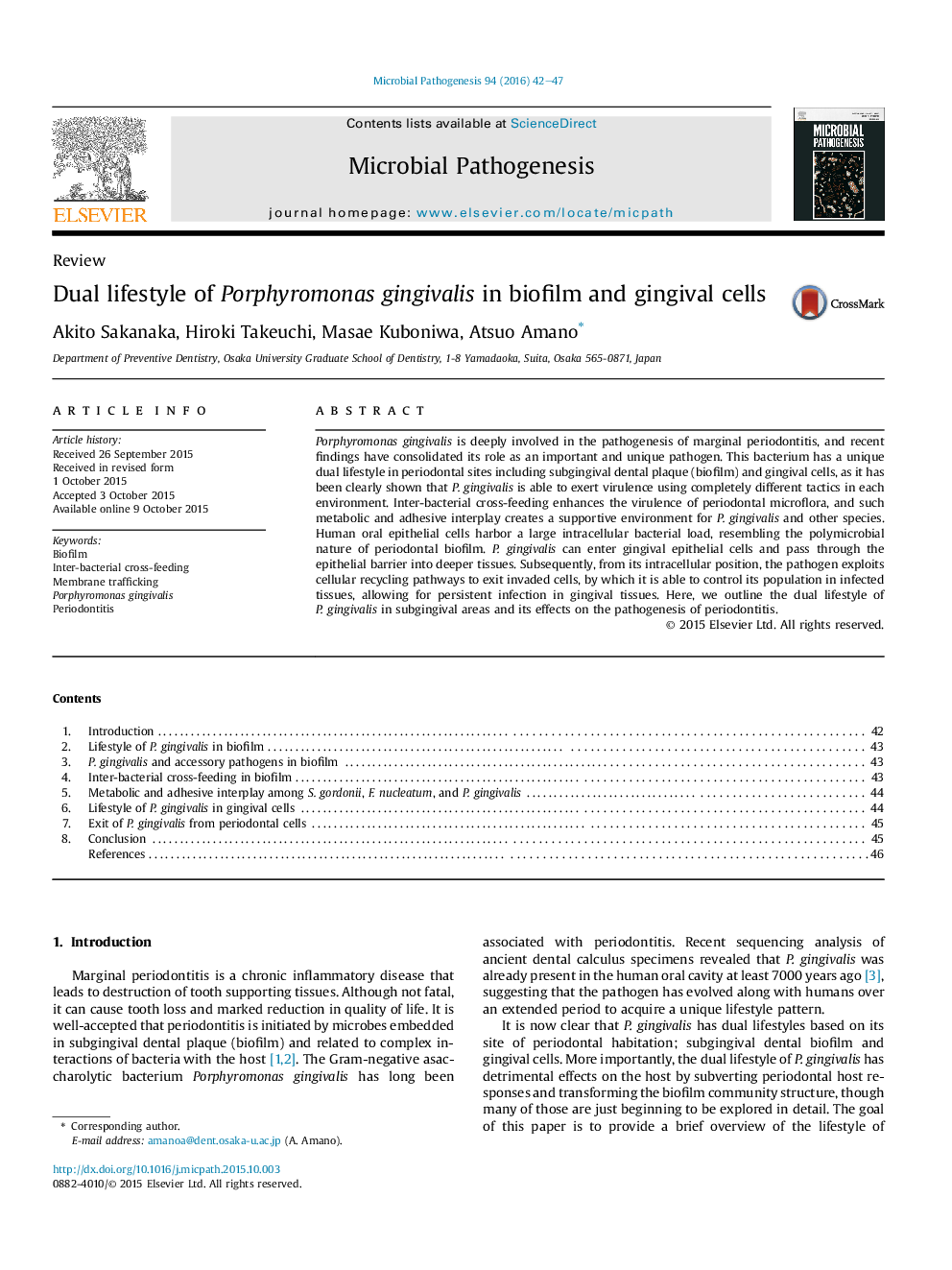| Article ID | Journal | Published Year | Pages | File Type |
|---|---|---|---|---|
| 3416340 | Microbial Pathogenesis | 2016 | 6 Pages |
•Porphyromonas gingivalis has a unique dual lifestyle in periodontal sites.•Inter-bacterial cross-feeding enhances the virulence of periodontal biofilm.•P. gingivalis exploits cellular recycling pathways to exit invaded cells.
Porphyromonas gingivalis is deeply involved in the pathogenesis of marginal periodontitis, and recent findings have consolidated its role as an important and unique pathogen. This bacterium has a unique dual lifestyle in periodontal sites including subgingival dental plaque (biofilm) and gingival cells, as it has been clearly shown that P. gingivalis is able to exert virulence using completely different tactics in each environment. Inter-bacterial cross-feeding enhances the virulence of periodontal microflora, and such metabolic and adhesive interplay creates a supportive environment for P. gingivalis and other species. Human oral epithelial cells harbor a large intracellular bacterial load, resembling the polymicrobial nature of periodontal biofilm. P. gingivalis can enter gingival epithelial cells and pass through the epithelial barrier into deeper tissues. Subsequently, from its intracellular position, the pathogen exploits cellular recycling pathways to exit invaded cells, by which it is able to control its population in infected tissues, allowing for persistent infection in gingival tissues. Here, we outline the dual lifestyle of P. gingivalis in subgingival areas and its effects on the pathogenesis of periodontitis.
